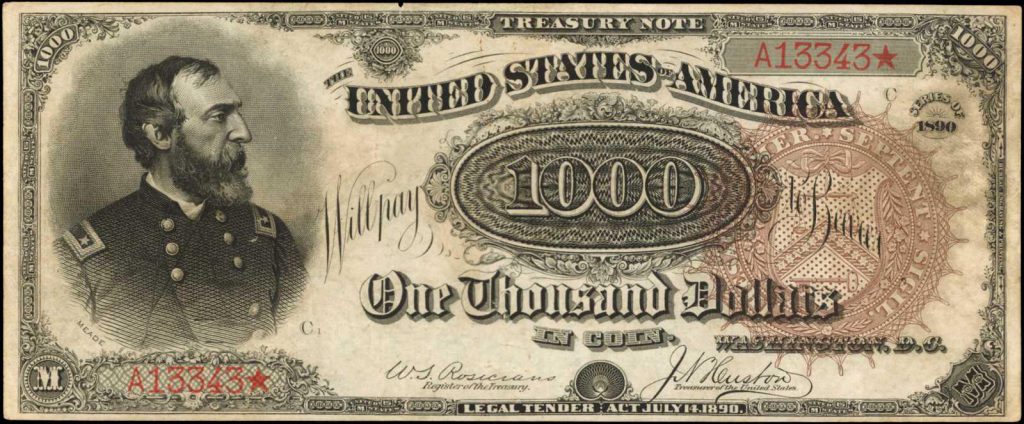A 128-year-old $1,000 U.S. treasury note known as the “Grand Watermelon” realized more than $2 million USD (about $2.625 million Cdn.) this October as part of Stack’s Bowers Galleries’ offering of the third part of the Joel R. Anderson Collection.
Considered the “holy grail” of U.S. currency and the No. 1 spot in Q. David Bowers and David Sundman’s 2005 book, 100 Greatest American Currency Notes, the note is one of only two examples in private hands.
“Rolling into first place in the 100 Greatest survey is the $1,000 “Grand Watermelon Note,” more formally known as the 1890 Coin Note or Treasury Note,” reads the Bowers and Sundman book. “For a long time this has been the Holy Grail for collectors of federal currency. Before the survey results were compared, those behind the scenes working on the book speculated that the Grand Watermelon Note would make first place, and we were right! Quite a few guesses as to other positions were off the mark.
“The nickname of this note is derived from the large, green zeroes on the back, which look like delicious watermelons. Today, Grand Watermelon Note is a term of affection, but it was not viewed this way by the Treasury Department in 1890, and steps were taken to change the design. Similarly, these wonderfully ornate notes were not admired by the public in their time. An article published in the Boston Evening Transcript in 1891 noted that a new series of designs was on its way, and that:
- ‘There will be no mourning for the old backs. At the Treasury they have never been regarded with very tumultuous approval. Officials at that institution commonly refer to the denominations representing $1,000, $500 and $100 as ‘water melons,’ because of the striking resemblance which the huge 0’s bear to the juicy vegetable in question.
- ‘They believe that the genius of Chief Engraver Casilear can produce very superior substitutes. Certainly a note that is not engraved all over is handsomer, and the best experts are of the opinion that a few scattered designs, very elaborate and executed in the highest style of art, are most difficult to counterfeit successfully.’
- ‘There never was a $500 Watermelon Note, but otherwise the account reads true. The Treasury felt that crowded designs without open spaces made notes easy to counterfeit.'”
TWO VARIETIES
The type is known in two varieties, Fr.379a (W-4580) with a large brown treasury seal and signatures of Rosecrans and Huston, and Fr.379b (W-4581) with a small red scalloped treasury seal and signatures of Rosecrans and Nebeker.
The face design portrays Union Major General George Meade at left. Meade is best known as the victorious commander of Union forces at the Battle of Gettysburg. Near the centre is an ornate 1,000 die counter with floral ornaments.
Graded About New-50 by Professional Coin Grading Service, this example was the first note to top the $1 million USD mark when it crossed the block in 2005. This October, its pre-sale estimate was between $1.25 million USD and $1.75 million USD.
The total realization for the Joel R. Anderson Collection to date is more than $26 million USD (nearly $35 million Cdn.). A final offering is slated for February 2019.

